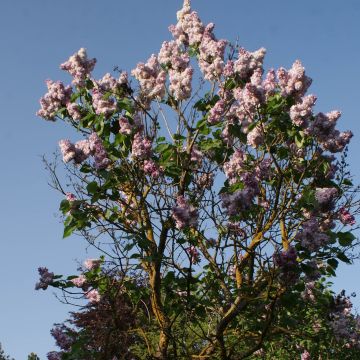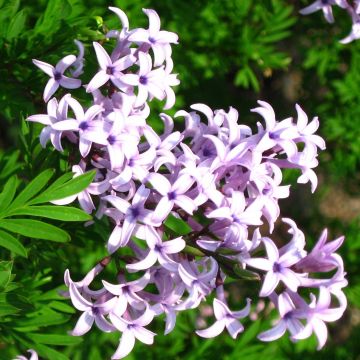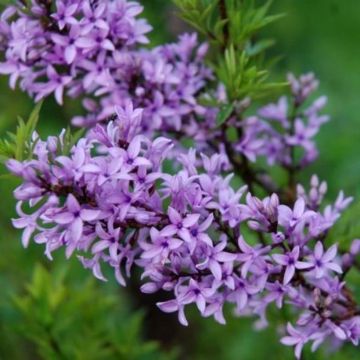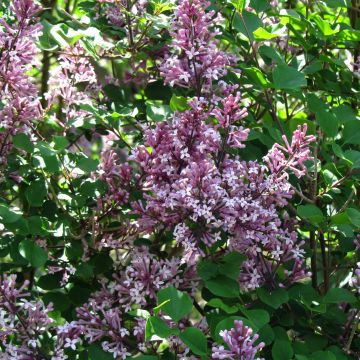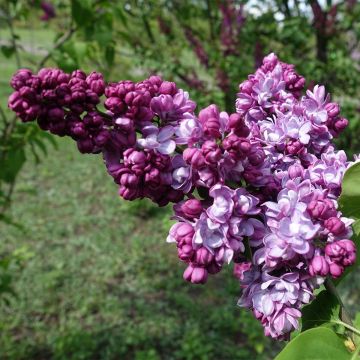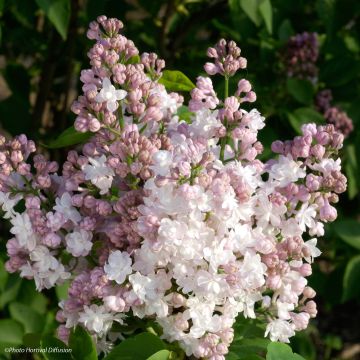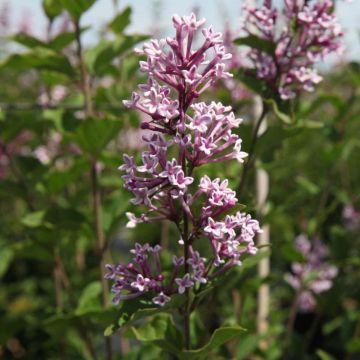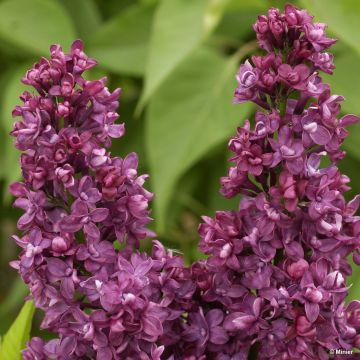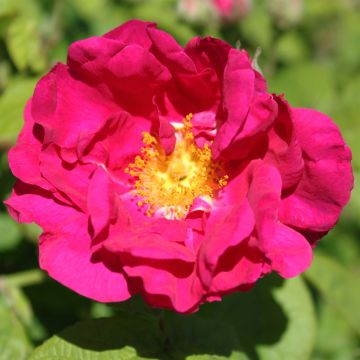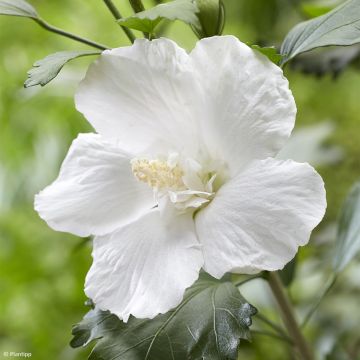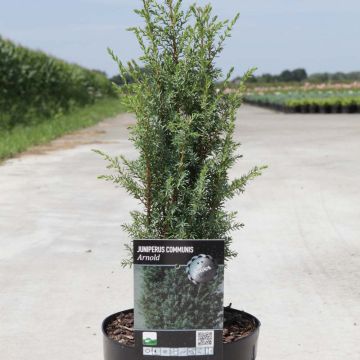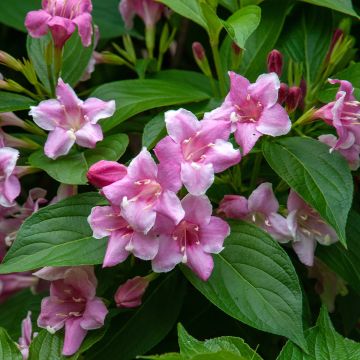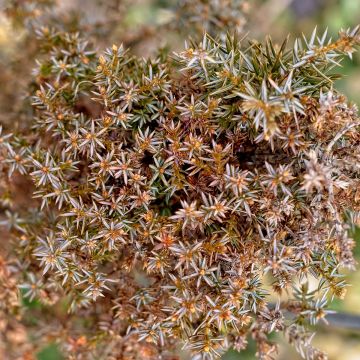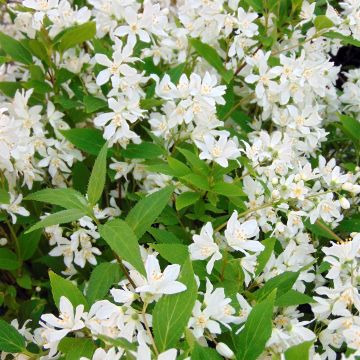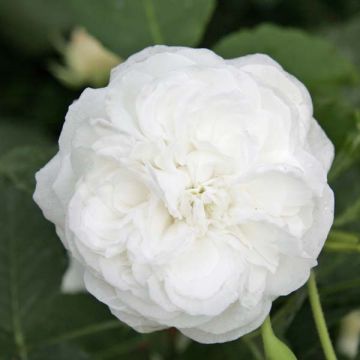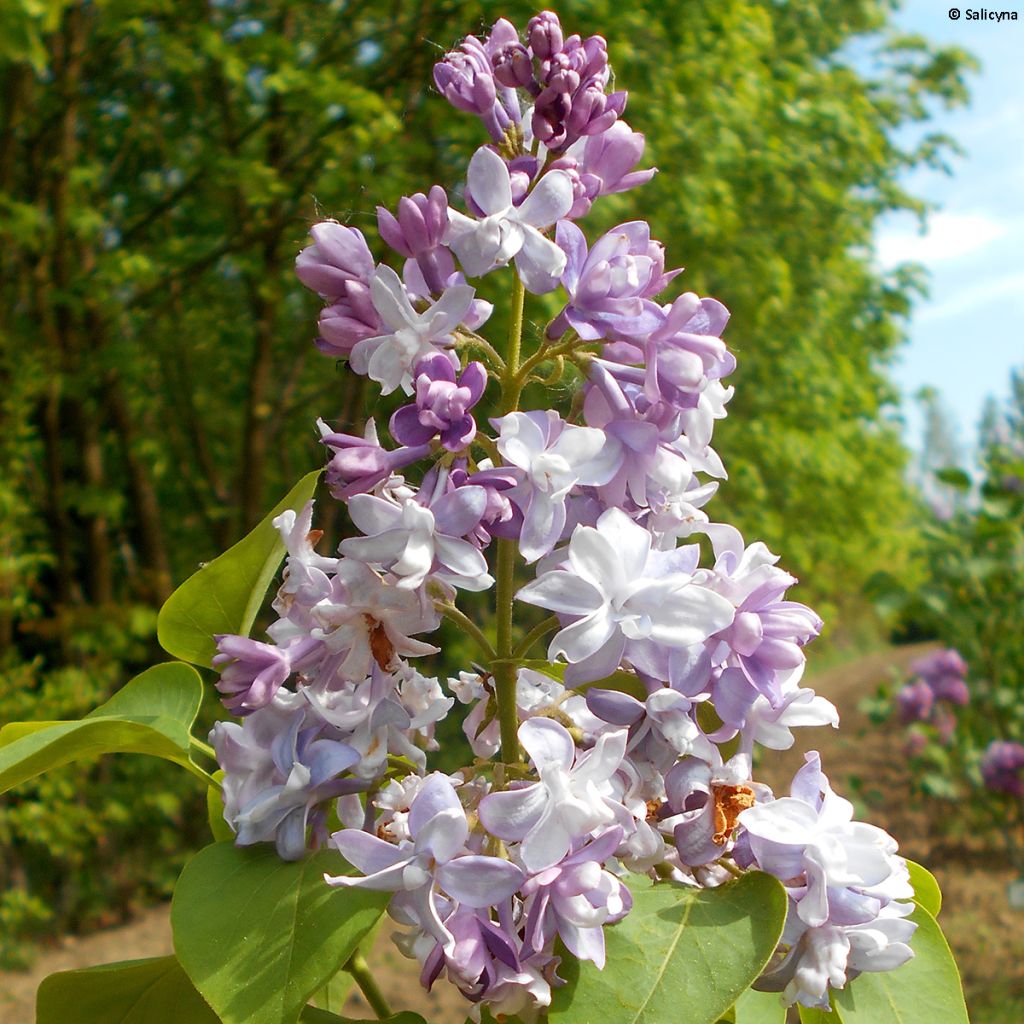

Syringa vulgaris Konchalovskii - Common Lilac
Syringa vulgaris Konchalovskii - Common Lilac
Syringa vulgaris Konchalovskii
Common Lilac, Lilac
This item cannot be shipped to the selected country
Delivery charge from €5.90
Delivery charge from €5.90
More information
Delivery charge from €5.90
Delivery charge from €5.90
More information
Schedule delivery date,
and select date in basket
This plant carries a 24 months recovery warranty
More information
We guarantee the quality of our plants for a full growing cycle, and will replace at our expense any plant that fails to recover under normal climatic and planting conditions.
From €5.90 for pickup delivery and €6.90 for home delivery
Express home delivery from €8.90.
From €5.90 for pickup delivery and €6.90 for home delivery
Express home delivery from €8.90.
Does this plant fit my garden?
Set up your Plantfit profile →
Description
The Konchalovskii Lilac, a superb descendant of the Syringa vulgaris, charms us with its clusters of beautiful, delicately scented, double flowers in a lovely lavender pink. This fairly old variety has all the charm and qualities of the common lilac, emblematic of old gardens, whether town or country: perfectly hardy and undemanding, it is unrivalled for its abundance of flowers, lustre, and subtle fragrance which, whilst not particularly strong in this Konchalovskii variety, is valued in flower bouquets, alongside peonies and irises. Its vigor allows it to thrive in a large flowering hedge or rustic shrub border.
The Syringa vulgaris 'Konchalovskii' is a shrub from the Oleaceae family, developed in 1956 by Leonid A. Kolesnikov in Russia. It is often forgotten that the common lilac, also known as the European Lilac, is native to south-eastern Europe and western Asia, more specifically the Balkan Peninsula, and that it arrived in western Europe at the end of the Renaissance. In the wild, this indomitable plant with highly scented blue-violet-purple flowers colonises stony hillsides and withstands cold winters.
The 'Konchalovskii' variety is a robust shrub, with an upright and rounded habit, reaching an average height of 3 to 4 m (10 - 13ft) and spread of 2.50 m (8ft). It naturally forms a multi-stemmed bush, similar to the mock orange with which it should not be confused. Its triangular and heart-shaped leaves, measuring 4 to 10 cm (1.6 - 3.9 in) long and 3 to 7 cm (1.2 - 2.8 in) wide, appear in spring in a satiny medium green. Flowering occurs in May. Compound clusters called thyrses, 15 to 22 cm (5.9 - 8.7 in) long, appear at the ends of one-year-old branches. The rose-mauve flower buds open into light mauve-pink, double flowers with a slight fragrance, creating a charming flower head that combines both colours. This sucker-producing variety produces numerous suckers from its base if it is ungrafted.
The shape of the multi-stemmed, mature Konchalovskii lilac is so impressive that along with its beautiful pastel flowers, it really deserves a prominent place as a free-standing specimen in a small garden. Easy to grow in temperate climates or even some mountain areas it is an excellent choice for a loose free-flowering hedge or shrub border. Mix it with other white, mauve, or red varieties, alongside single-flowered roses, mock oranges, Amelanchier trees, snowbell tree, or large buddleias (B.officinalis, B. alternifolia). A hedge of lilacs, flowering cherries, Chinese flowering almonds, Japanese quinces, and ornamental apple trees, planted above a sunken pathway is a true delight in spring. It can also be used as a free-standing specimen in a space to itself, surrounded by a bed of ground-covering roses, to turn this modest subject into a grandiose shrub, covered in grandiose glory in the heart of spring.
Syringa vulgaris Konchalovskii - Common Lilac in pictures
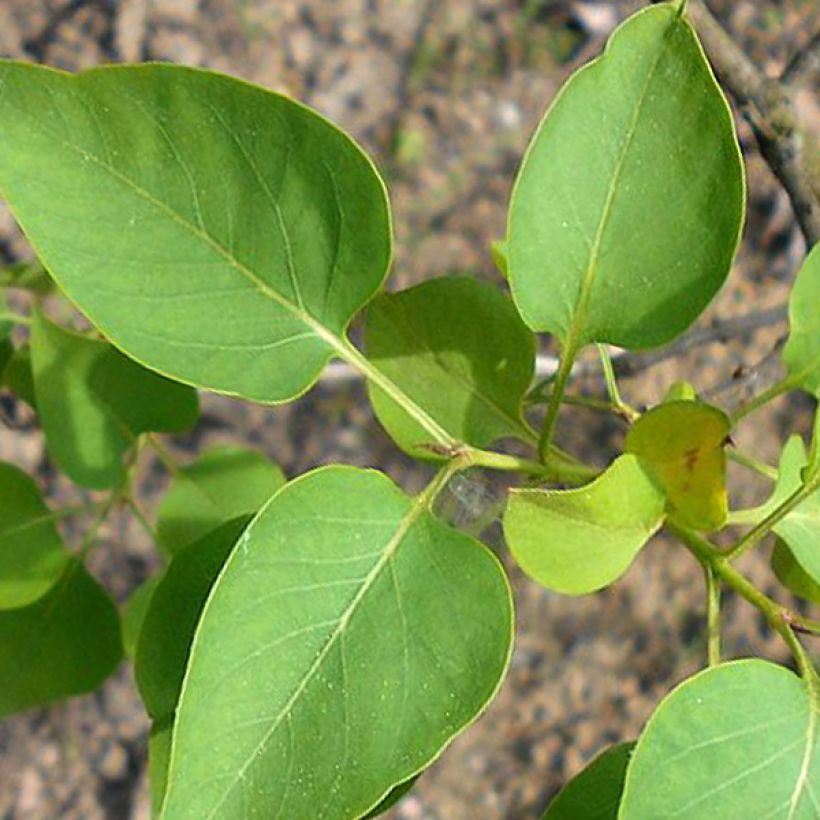

Plant habit
Flowering
Foliage
Botanical data
Syringa
vulgaris
Konchalovskii
Oleaceae
Common Lilac, Lilac
Cultivar or hybrid
Other Syringa - Lilac
Planting and care
The common lilac thrives in full sun, in a slightly moist but well-drained, even rocky soil. It tolerates all types of soil, but prefers it to be slightly chalky, disliking strongly acidic soil. It will grow well in a semi-shaded spot, but with fewer flowers. Its hardiness is excellent, below -15°C (5°F). Easy to grow, its only maintenance requirements are mulching and regular watering to maintain a certain level of humidity in dry summer climates. The thirsty foliage of the large-flowered hybrids can be damaged through a lack of water in hotter, drier climates. Water it in the first few years in the event of severe drought. You can prune the flowering branches to make beautiful bouquets, or at the end of flowering to encourage the growth of new flowers and avoid depleting the shrub's energy. Avoid severe pruning, which will limit flowering the following spring, unless your lilac becomes too large.
Planting period
Intended location
Care
-
, onOrder confirmed
Reply from on Promesse de fleurs
Foolproof Shrubs
Haven't found what you were looking for?
Hardiness is the lowest winter temperature a plant can endure without suffering serious damage or even dying. However, hardiness is affected by location (a sheltered area, such as a patio), protection (winter cover) and soil type (hardiness is improved by well-drained soil).

Photo Sharing Terms & Conditions
In order to encourage gardeners to interact and share their experiences, Promesse de fleurs offers various media enabling content to be uploaded onto its Site - in particular via the ‘Photo sharing’ module.
The User agrees to refrain from:
- Posting any content that is illegal, prejudicial, insulting, racist, inciteful to hatred, revisionist, contrary to public decency, that infringes on privacy or on the privacy rights of third parties, in particular the publicity rights of persons and goods, intellectual property rights, or the right to privacy.
- Submitting content on behalf of a third party;
- Impersonate the identity of a third party and/or publish any personal information about a third party;
In general, the User undertakes to refrain from any unethical behaviour.
All Content (in particular text, comments, files, images, photos, videos, creative works, etc.), which may be subject to property or intellectual property rights, image or other private rights, shall remain the property of the User, subject to the limited rights granted by the terms of the licence granted by Promesse de fleurs as stated below. Users are at liberty to publish or not to publish such Content on the Site, notably via the ‘Photo Sharing’ facility, and accept that this Content shall be made public and freely accessible, notably on the Internet.
Users further acknowledge, undertake to have ,and guarantee that they hold all necessary rights and permissions to publish such material on the Site, in particular with regard to the legislation in force pertaining to any privacy, property, intellectual property, image, or contractual rights, or rights of any other nature. By publishing such Content on the Site, Users acknowledge accepting full liability as publishers of the Content within the meaning of the law, and grant Promesse de fleurs, free of charge, an inclusive, worldwide licence for the said Content for the entire duration of its publication, including all reproduction, representation, up/downloading, displaying, performing, transmission, and storage rights.
Users also grant permission for their name to be linked to the Content and accept that this link may not always be made available.
By engaging in posting material, Users consent to their Content becoming automatically accessible on the Internet, in particular on other sites and/or blogs and/or web pages of the Promesse de fleurs site, including in particular social pages and the Promesse de fleurs catalogue.
Users may secure the removal of entrusted content free of charge by issuing a simple request via our contact form.

































